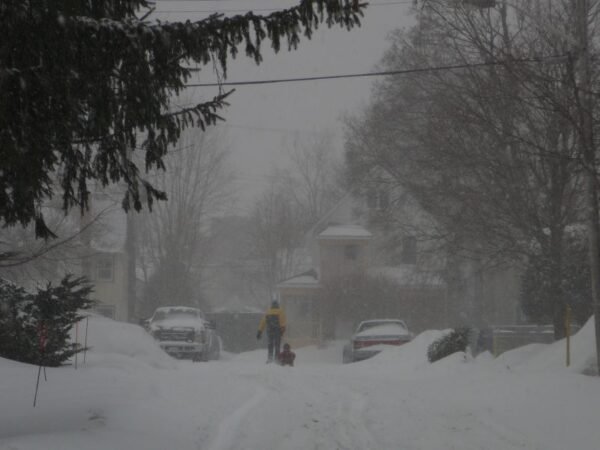Quick Takeaways
-
Research from the U.S. National Science Foundation highlights significant changes in winter weather patterns, revealing increased snowfall in some northern areas while the western U.S. faces reduced snowfall, impacting winter sports and local economies.
-
A 2020 study predicts a drastic decline in snowstorms by the 2090s, with central and eastern North America experiencing 28% fewer snowstorms, a 33% reduction in snow precipitation, and a 38% decrease in average snowstorm size.
-
Climate change is extending the allergy season, with projections indicating pollen emissions could start 40 days earlier and increase by up to 200% by century’s end, exacerbating health issues for allergy sufferers.
- Ongoing NSF-funded research aims to understand shifts in winter weather and their environmental and economic impacts, enhancing forecasting and preparedness strategies for communities facing climate change.
Understanding Shifts in Weather Patterns
Charles Dudley Warner once noted that while everyone discusses the weather, few take action. More than a century later, the U.S. National Science Foundation (NSF) is taking action by revealing crucial shifts in weather patterns. Recent research from the NSF’s Division of Atmospheric and Geospace Sciences showcases how climate change is impacting snowfall, storm intensity, and average temperatures. In northern regions, warmer air leads to more intense snowstorms, contributing to heavier snowfall under the right conditions. However, in areas like the western U.S., researchers observe a troubling decrease in snowfall, threatening winter sports and local economies.
Moreover, altered weather patterns influence ecosystems and species. Since 1983, the duration of lake ice cover in Colorado has decreased by 24 days, resulting from earlier spring thaws and later autumn freezes. This change impacts freshwater supplies for nearly half of the world’s population. The research reveals that our weather is not merely changing—it is undergoing profound shifts that could have lasting implications.
Tackling Future Challenges
As winters shorten and evolve, they may also contribute to more intense allergy seasons. Warmer temperatures can increase pollen production, potentially starting earlier and peaking more dramatically. Studies indicate that by the end of the century, pollen emissions might begin 40 days earlier, affecting millions of allergy sufferers.
In response, NSF researchers are diligently working to refine weather forecasts and bolster emergency preparedness. They explore how shifts in winter weather contribute to regional environments and economies. This proactive research may offer solutions to mitigate the adverse effects of climate change. Therefore, while the weather remains a topic of conversation, it is clear that with ongoing scientific inquiry, we can better understand and perhaps influence our climate future.
Discover More Technology Insights
Learn how the Internet of Things (IoT) is transforming everyday life.
Explore past and present digital transformations on the Internet Archive.
TechV1

